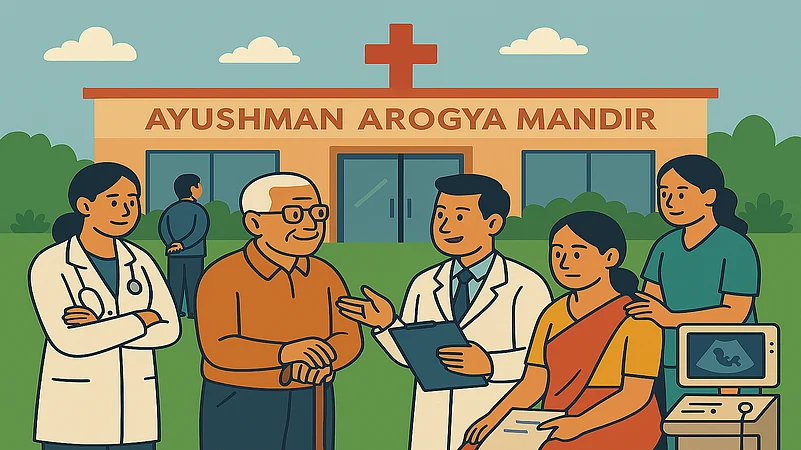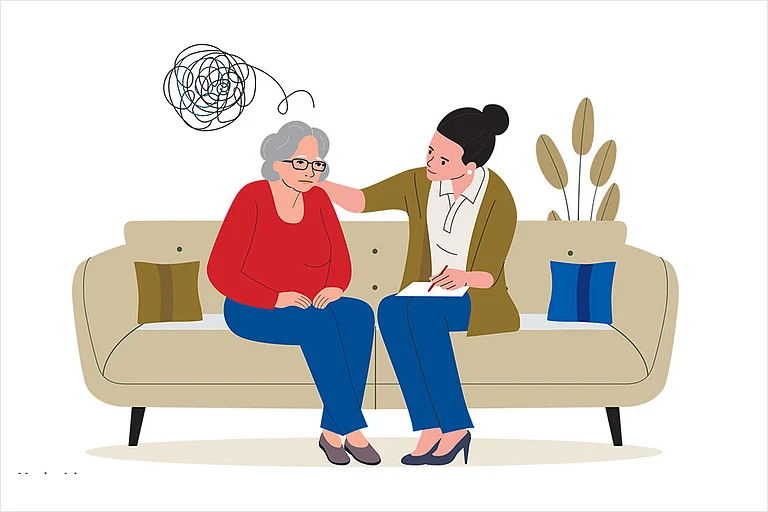Ayushman Arogya Mandir (AAM) offers comprehensive primary healthcare to people in India. The initiative under the government's Ayushman Bharat program aims to bring primary healthcare closer to communities and people at no cost. The comprehensive healthcare services include preventive, curative, rehabilitative, promotive, and palliative care for people. As of June 30, 2025, a total of around 1.8 lakh (1,77,906) Ayushman Arogya Mandirs were operational across India. In a written reply in the Lok Sabha on July 25, 2025, Minister of Health and Family Welfare, J.P. Nadda, informed that the government has exceeded its target to open 1.5 lakh Arogya Mandirs by 2022.
This has been achieved by converting the Sub-Health Centres (SHCs) and Primary Health Centres (PHCs) in the urban and rural areas to offer 12 packages of healthcare services. As of July 28, 2025, there are a total of 1,78,368 Arogya Mandirs, including 1,28,869 SHCs, 24,225 PHCs, 5,334 urban PHCs, 12,292 Ayush, and 7,648 Health and Wellness Centres (UHWCs), per Ministry of Health and Family Welfare.
How Do AAMs Work?
The AAM healthcare centres are located in urban and rural areas, including plains and remote areas. They offer universal healthcare by providing primary and tertiary care close to people’s homes.
What Services Do Ayushman Arogya Mandirs Offer?
It offers services ranging from preventive to first-level emergency services. These include:
• Preventive care by providing health education, immunisation, screening for diseases like diabetes, hypertension, and cancers
• Promotive care through health and wellness counselling, and giving advice about nutrition and lifestyle
• Curative care by offering treatment for communicable and non-communicable diseases
• Rehabilitative care by providing physical therapy and other rehabilitation services
• Palliative care for chronic and terminal illnesses
In addition to this, these centres offer maternal and child healthcare, mental healthcare support, and first-level emergency and trauma care. According to the MoFHW website, its 12 healthcare packages include:
1. Care in pregnancy and childbirth
2. Neonatal and infant health care services
3. Childhood and adolescent health care services
4. Family planning, contraceptive services, and Other Reproductive Health Care services
5. Management of communicable diseases under the National Health Programs
6. Management of common communicable diseases and general outpatient care for acute simple illnesses and minor ailments
7. Screening, prevention, control, and management of non-communicable diseases and chronic communicable diseases like Tuberculosis and Leprosy
8. Basic oral health care
9. Care for common ophthalmic and ENT problems
10. Screening and basic management of mental health issues
11. Elderly and palliative health care services
12. Emergency medical services
Notably, the services are universal and free for all, irrespective of socioeconomic status. Last year, as of July 31, 2024, there were 1,73,881 Ayushman Arogya Mandirs, with the highest operational centres (1,250) in the South 24 Parganas district of West Bengal.


















